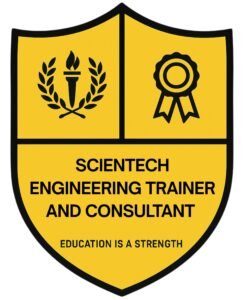
Structural Design (Steel)
The Structural Design (Steel) course focuses on the design and analysis of steel structures, which are widely used in industrial, commercial, and residential buildings due to their strength, flexibility, and durability. The course covers the design of steel elements such as beams, columns, connections, and frames under different loading conditions. It also emphasizes the use of international design codes, such as IS 800 (India) and AISC (American Institute of Steel Construction), to ensure safe and efficient designs.
Key Topics Covered:
-
Introduction to Steel Design: Understanding the properties of steel and the advantages of using steel as a structural material.
-
Design of Steel Beams: Calculation of bending, shear, and torsional stresses in beams, and how to design the appropriate reinforcement and connection details.
-
Design of Steel Columns: Analysis of axial and lateral loads on columns and design considerations for stability and strength.
-
Design of Steel Frames: Study the design of multi-story and industrial steel frames under various loading conditions, including dead loads, live loads, and wind loads.
-
Steel Connections: Learn the design and analysis of various types of steel connections, including bolted, welded, and riveted connections.
-
Design of Roof Trusses: Understand the principles of designing roof trusses for industrial and commercial buildings.
-
Load Combinations and Structural Stability: Apply relevant load combinations and check for stability under combined loading conditions (axial, bending, shear).
-
Design Codes and Standards: Study and apply IS 800, AISC 360, and other relevant codes for steel structure design.
-
Fatigue and Buckling: Analyze the effects of cyclic loading and design for fatigue. Learn about the buckling behavior of slender steel members.
Learning Outcomes:
-
Master the design of steel structures, ensuring they are safe, efficient, and cost-effective.
-
Understand and apply relevant international design codes (IS 800, AISC) for steel structure design.
-
Design steel beams, columns, connections, and frames under different loading conditions.
-
Develop skills to solve real-world problems in the design and analysis of steel structures.
What Will You Learn?
- This course will teach you the principles of designing steel structures, including beams, columns, connections, frames, and trusses. You’ll learn how to design safe and efficient steel elements under various loading conditions, ensuring stability and durability in structural design. You’ll also gain proficiency in applying international design codes like IS 800 and AISC for steel structure design.





